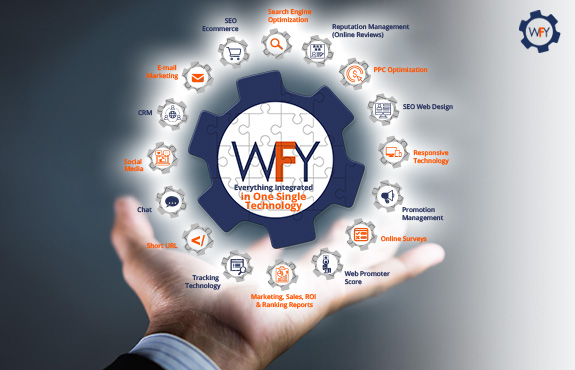Emojis in Digital Marketing: Learn How to Use them in your Strategy
min read
September 19, 2019
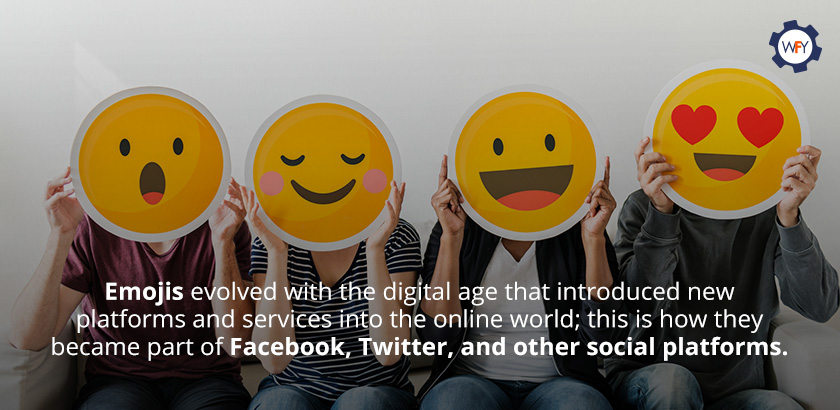 Remember the time when we were still looking for a way to express our emotions via text messages and emails? It was around this time that we started using characters to illustrate facial expressions, and we continued with this trend until we could count on emojis to add an extra "something" to liven up our texts.
Remember the time when we were still looking for a way to express our emotions via text messages and emails? It was around this time that we started using characters to illustrate facial expressions, and we continued with this trend until we could count on emojis to add an extra "something" to liven up our texts.A few years ago, the sole purpose of emojis was to help us talk among friends and provide entertainment whenever we were bored. As years went by, all these icons evolved with the digital age that introduced new platforms and services into the online world. Emojis became part of Facebook, Twitter, and other social platforms that were growing in popularity at the time. At this point, they turned into more than additions to text messages; in many cases, emojis themselves were the message.
Let's not get ahead. First of all, let's talk about the origin of emojis and what's entailed in the visual phenomenon they started.
What is an Emoji?
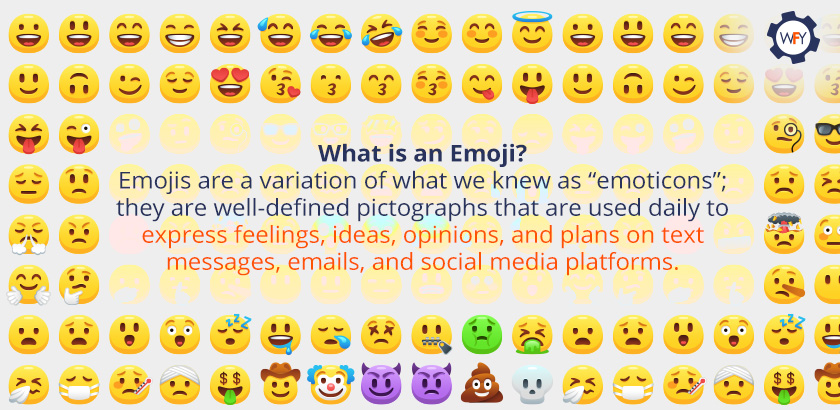 From a technical standpoint, emojis are a variation of what we knew as "emoticons." They represent the evolution of emoticons over time, going from a group of characters to a series of well-defined pictographs that are used daily to express feelings, ideas, opinions, and plans on text messages, emails, and social media platforms. They are basically everywhere.
From a technical standpoint, emojis are a variation of what we knew as "emoticons." They represent the evolution of emoticons over time, going from a group of characters to a series of well-defined pictographs that are used daily to express feelings, ideas, opinions, and plans on text messages, emails, and social media platforms. They are basically everywhere.Where did these icons come from and how did they become part of our digital culture?
A Brief History of Emojis
Before taking the form that's currently so familiar, emoticons were nothing but a group of characters (usually two or three) that, once put together, resembled a particular expression. In 1995, Japanese communications corporation Docomo introduced a proposal to implement the symbol of a heart into their products to attract younger audiences. This is where icons started surpassing characters as tools to express emotions.Soon after the inclusion of this new symbol in the market, the company decided to expand their original approach and with the help of several engineers, they developed a set of icons. With 176 icons created to mimic some of the most common expressions in Japanese manga, emojis started taking over people's habits.
The golden era of emojis came in 2011, however, when Apple implemented these symbols in their iOS 5 system. Emoji culture expanded internationally until it turned into a trend that's still far from going out of style, especially after the arrival of digital marketing.
The Rise of Emojis Shown in Numbers
 The trend started spreading beyond private conversations and even made way for an unofficial worldwide holiday dedicated to emojis (July 17). On top of being part of an astounding number of online platforms, emojis have become an effective digital marketing strategy. Back in the day, the option of using emoticons and emojis in corporate emails or in communication channels between companies and targets represented a non-profitable approach that marketing teams didn't bother looking into.
The trend started spreading beyond private conversations and even made way for an unofficial worldwide holiday dedicated to emojis (July 17). On top of being part of an astounding number of online platforms, emojis have become an effective digital marketing strategy. Back in the day, the option of using emoticons and emojis in corporate emails or in communication channels between companies and targets represented a non-profitable approach that marketing teams didn't bother looking into.By 2015, however, the numbers released by Emoji were a clear hint of the power emojis held over the digital population, stating that 92% of online consumers were already using emojis at the time. That same year, the Oxford Dictionary announced that an emoji, the tears-of-joy emoji specifically, was the word of the year for the first time in its history. With the announcement, they stated that this pictograph in particular had been the most popular "word" that people used on a global scale to express feelings and inject humor into interactions.
Now there are 3,019 emojis to choose from, and we can count on this number to grow in the upcoming years. The popularity of emojis will probably continue to increase alongside the number of icons available, so we should talk about the possibility of adding them to your digital marketing strategy if you haven't already.
The Importance of Including Emojis in your Digital Marketing Strategy
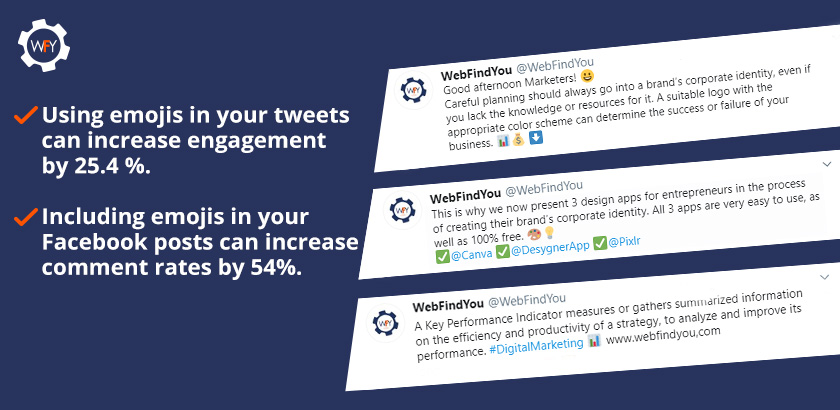 As you can see, emojis represent an important part of the world's digital culture. Big corporations like Chevrolet, McDonald's, Disney, and Domino's Pizza have a clear understanding of this. As a result, they have learned how to cleverly introduce emojis as part of their campaigns.
As you can see, emojis represent an important part of the world's digital culture. Big corporations like Chevrolet, McDonald's, Disney, and Domino's Pizza have a clear understanding of this. As a result, they have learned how to cleverly introduce emojis as part of their campaigns.Why have these pictographs become so popular in the marketing world? Easy. Emojis are the ideal tool for attracting the public's attention with a message that's fresh, entertaining, and informative without having to use too many words and with no worries about language barriers. Emojis represent a universal language that the majority of the digital population knows and accepts.
One of the clearest examples of the power of emojis in the digital world is provided by WordStream's study, which states that using emojis in your tweets can increase engagement by 25.4 %. When it comes to Facebook, a recent analysis showed that the inclusion of emojis in your posts can increase the comment rates by 54%.
Other Popular Blog Posts
How Can I Use Emojis in my Digital Marketing Strategy?
If we've managed to convince you to include emojis in your marketing strategy, you must know the rules of the game. The art of using emojis in marketing is more delicate than it looks because you can't just pick an icon at random, create a post, and be done with it. For your strategy to work, there are parameters you must follow beforehand.Here's a small guide to help you integrate emojis into your digital marketing strategy:
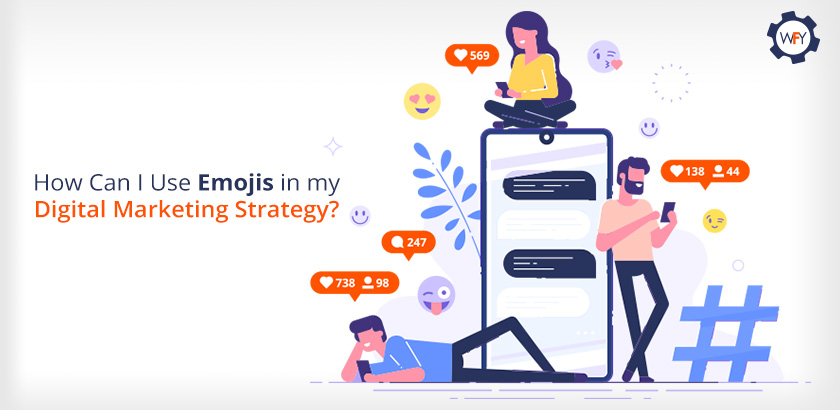
- Take the Time to Find the Emojis that Best Illustrate Your Business
Is your company related to beauty, finances, homelife, fashion? What portion of the market is it destined to support? These are questions you must ask yourself in order to identify the emojis that come closer to showing what you sell. With this knowledge, you can create the appropriate strategy as well as avoid becoming one of those businesses that wind up confusing users with the messages suggested by their emojis. - Don't Overuse Them
As we mentioned in previous paragraphs, emojis can either complement a message or be the message all on their own, but if you start playing too much with them, using them to share a code message, for example (like Chevrolet did), the result can be counterproductive. Once again, it all depends on the industry where your business operates; some users will prefer immediate information without having to take the time to decode a message. It's imperative to conduct proper research on your target audience before defining your strategy. - You Must Understand the Meaning of Each Emoji (or at least the ones you will use)
It goes without saying that you should visit platforms like Emojipedia if you are unsure about the meaning of a particular emoji. There are many websites that provide concrete information about the meaning of each of the emojis currently available. This will help you avoid misunderstandings and mistakes that might cost you a potential customer in the future. - Learn the Basic Rules in the Usage of Emojis
Emojis aren't really something you can take for granted if you expect to get results in your digital marketing strategy. The best way to generate the engagement you need is to learn the basic rules that guarantee the correct application of emojis in online spaces. For example, emojis are added after the text; if you want to send a code message, you need to ensure a coherent order in your emoji sequence; depending on context, emojis can go before or after a period.
Keep Up with all the Digital Marketing Trends with WebFindYou
 At WebFindYou, we understand the importance of knowing the latest trends that are integrated into new marketing strategies. With this information, companies can generate more appropriate campaigns and increase their chances of generating better digital marketing results.
At WebFindYou, we understand the importance of knowing the latest trends that are integrated into new marketing strategies. With this information, companies can generate more appropriate campaigns and increase their chances of generating better digital marketing results.This is why we offer our News+Blog section. You will find valuable content about digital marketing strategies, news, updates, and articles describing the latest developments in technology and other areas of the digital marketing world.
Do you Want to Know More About WebFindYou? Contact us Today!
To learn more about our technology and all the advantages we offer for your business, visit our All-In-One page, where you will find detailed information about each of the 20+ tools we've integrated in one single place to help you implement true digital marketing with less hassle, reduced costs, and increased revenues. If you want to contact a member of the WebFindYou team, call 866-SEO-WEBS or fill out our contact form. We will be happy to assist you!If you found this article helpful then let us know in the comments section below. Likewise, feel free to share it using the share options below. Want us to cover another topic of your interest pertaining to digital marketing? If so, then like us and follow us on social media, and post to any of our social media profiles the topic you'd like us to discuss: Facebook WebFindYou, Instagram @WebFindYou and Twitter @WebFindYou.




